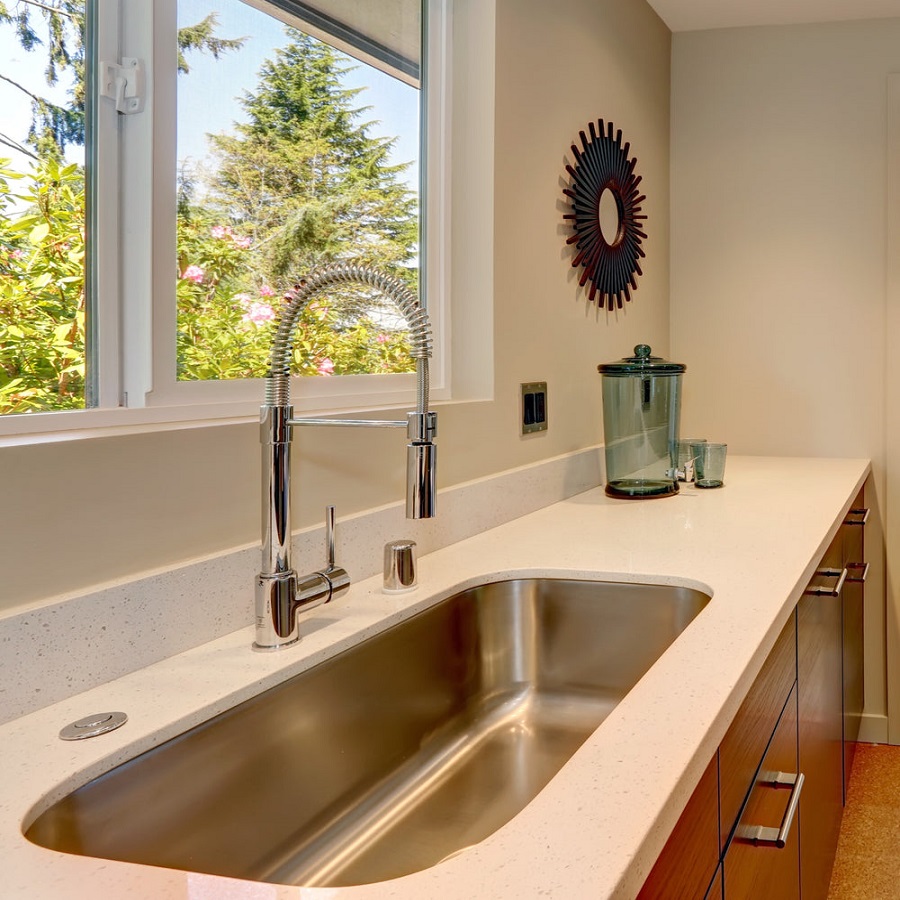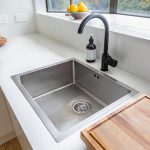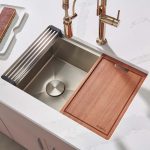When it comes to kitchen design, one of the most important elements is the kitchen sink. It serves as a focal point in the room and plays a crucial role in daily tasks, from washing dishes to preparing food. The material used for a kitchen sink can dramatically influence its functionality, aesthetics, and durability. In this article, we will explore various materials used in kitchen sinks, focusing on their characteristics, advantages, and potential drawbacks.
Stainless Steel Sinks: A Popular Choice
Characteristics and Composition
Stainless steel sink are among the most popular options for modern kitchens. Made primarily from chromium and nickel, stainless steel is known for its corrosion resistance and strength. The composition typically includes a mix of 10-20% chromium and 8-10% nickel, which enhances its durability and gives it a sleek, shiny finish. The gauge of the steel also plays a significant role; lower gauge numbers indicate thicker steel, which generally results in a more durable sink.
Advantages of Stainless Steel Sinks
One of the main advantages of stainless steel sink is their resistance to staining, rusting, and corrosion. This makes them ideal for busy kitchens where spills and splashes are common. Additionally, they are relatively lightweight, making installation easier compared to heavier materials. Stainless steel sinks are also highly versatile, available in various styles, from undermount to drop-in, allowing homeowners to choose designs that fit their kitchen aesthetic.

Composite Sinks: Blending Materials for Durability
Composition of Composite Sinks
Composite sinks are made from a blend of materials, usually combining acrylic, resin, and natural stone. This mixture creates a robust and aesthetically pleasing product that can mimic the look of natural stone without the maintenance requirements. The most common types of composite sinks include granite composite and quartz composite. These materials often have a smooth finish and are available in various colors and patterns.
Benefits of Composite Sinks
One of the significant advantages of composite sinks is their resistance to chipping, scratching, and staining. Since they are non-porous, they do not harbor bacteria and are easy to clean, making them an excellent choice for families. Additionally, composite sink tend to be quieter than metal sinks, reducing noise when washing dishes or preparing food. They also offer a high-end look that can elevate the kitchen’s overall design.
Cast Iron Sinks: Timeless Elegance
Understanding Cast Iron Composition
Cast iron sinks are made from iron, which is heated and poured into molds to create sturdy, long-lasting products. They are typically coated with enamel, giving them a smooth, glossy finish. This enamel coating is available in various colors, making cast iron sinks a stylish addition to any kitchen. The dense nature of cast iron provides excellent insulation, helping to keep water at the desired temperature for longer periods.
Advantages of Cast Iron Sinks
One of the main draws of cast iron sinks is their timeless elegance. They are often associated with vintage or farmhouse-style kitchens, providing a classic look that never goes out of style. Additionally, cast iron is incredibly durable; with proper care, these sinks can last for decades. Their enamel coating also makes them resistant to staining and easy to clean, although care must be taken to avoid chipping the enamel, which can expose the iron beneath.
Fireclay Sinks: Artisan Craftsmanship
What is Fireclay?
Fireclay sinks are crafted from a specific type of clay that is fired at an extremely high temperature, resulting in a dense and durable material. The firing process creates a hard, non-porous surface that is both beautiful and functional. Fireclay sinks are often available in apron-front designs, which add a unique visual element to kitchens. The glazing applied to fireclay sink gives them a glossy finish that is resistant to staining and easy to clean.
Advantages of Fireclay Sinks
One of the most significant advantages of fireclay sink is their resilience. They are highly resistant to scratches, chips, and stains, making them ideal for everyday use. Additionally, fireclay sinks are non-porous, preventing bacteria from harboring on their surfaces. Their aesthetic appeal is another strong point; the glossy finish and available colors can complement various kitchen designs, from contemporary to traditional.
Considerations for Fireclay Sinks
While fireclay sinks offer many benefits, they are also subject to certain limitations. Like cast iron, fireclay sinks are heavy, which may require additional support during installation. Moreover, despite their durability, they can still chip if subjected to sharp impacts. Homeowners should also be aware that fireclay sink can be more expensive than other options, so budget considerations are essential when making a selection.
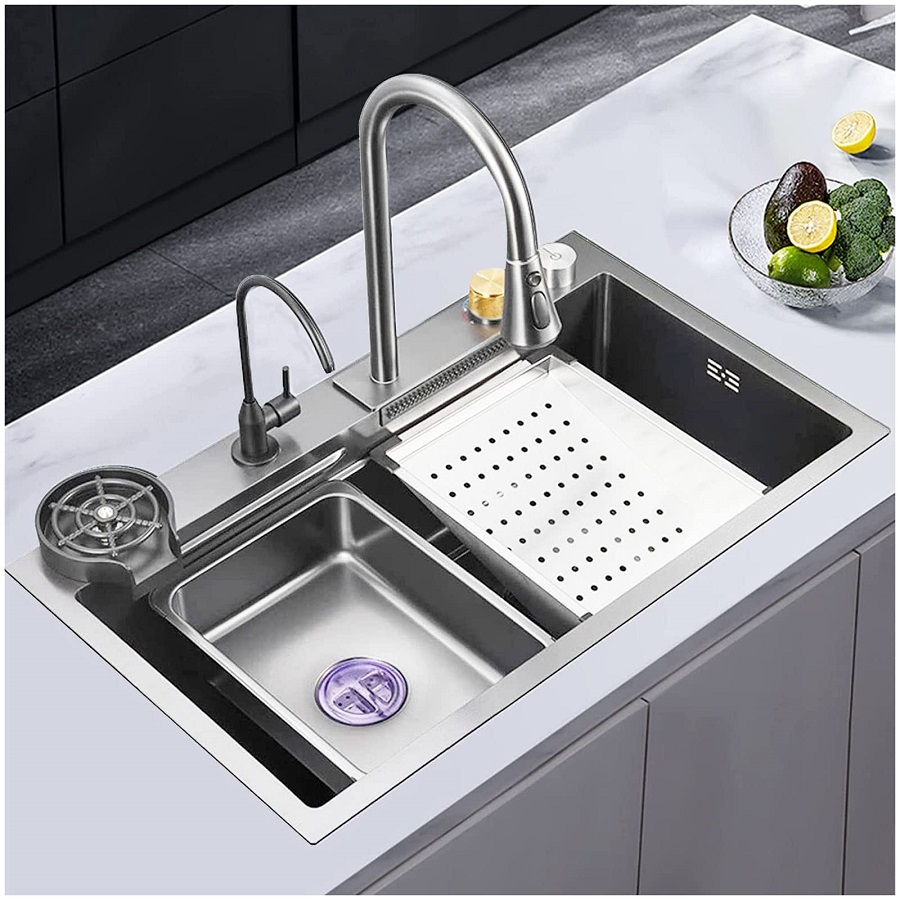
Copper Sinks: Rustic Charm and Unique Beauty
Characteristics of Copper Sinks
Copper sinks are made from pure copper, which is known for its distinctive warm tones and attractive patina that develops over time. Each copper kitchen sink is unique due to the hand-hammered craftsmanship often involved in their production. This artisanal quality adds character to the kitchen and can serve as a stunning focal point. Copper is also naturally antimicrobial, which can contribute to a healthier kitchen environment.
Benefits of Copper Sinks
The primary advantage of copper sink is their unique aesthetic appeal. They can bring a rustic or vintage vibe to a kitchen, making them perfect for farmhouse or eclectic designs. Additionally, copper’s natural properties make it resistant to bacterial growth, contributing to a more hygienic workspace. The patina that develops on copper sinks over time can enhance their beauty, creating a rich, aged look that many homeowners find appealing.
Downsides of Copper Sinks
However, copper sinks come with some considerations. They require regular maintenance to preserve their color and prevent tarnishing. Homeowners may need to periodically apply a protective wax or oil to maintain the sink’s appearance. Additionally, copper is softer than other materials, making it more susceptible to scratches and dents. Care should be taken when using utensils and cleaning products to avoid damaging the surface.
Acrylic Sinks: Affordable and Lightweight
Composition of Acrylic Sinks
Acrylic sinks are constructed from a durable plastic material known for its lightweight properties. They are typically molded into various shapes and sizes, allowing for versatile design options. Acrylic sink can be found in a wide range of colors and finishes, making them suitable for various kitchen styles. The non-porous surface of acrylic also contributes to its ease of cleaning and maintenance.
Advantages of Acrylic Sinks
One of the main benefits of acrylic sinks is their affordability. They are generally less expensive than other materials, making them an attractive option for budget-conscious homeowners. Additionally, their lightweight nature simplifies installation and reduces the need for additional support. Acrylic sinks are resistant to staining and easy to clean, providing a practical solution for high-traffic kitchens.
Potential Disadvantages of Acrylic Sinks
Despite their advantages, acrylic sinks are not without drawbacks. They can be prone to scratching and denting, particularly if abrasive cleaning tools are used. Furthermore, acrylic is not as heat-resistant as materials like stainless steel or cast iron, so placing hot pots directly on the surface can cause warping or damage. Homeowners should weigh these factors against their needs and preferences when choosing an acrylic sink.
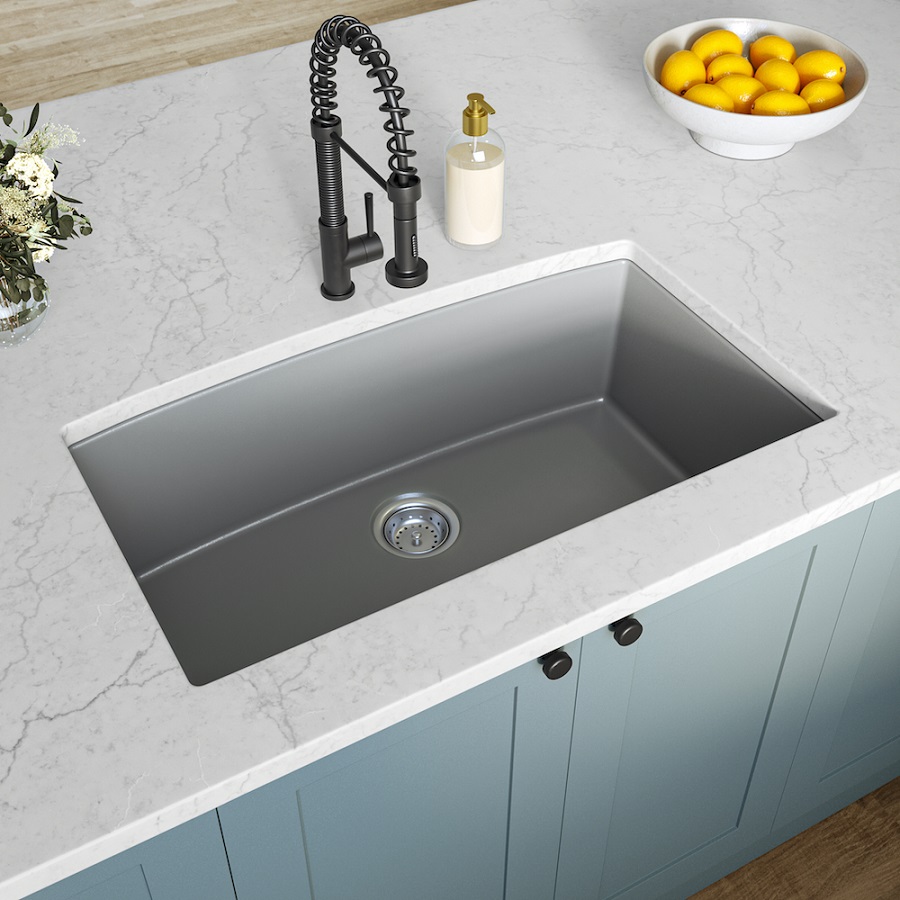
Stone Sinks: Natural Beauty and Durability
Exploring Stone Sink Materials
Stone sinks, such as those made from granite, marble, or soapstone, provide a unique aesthetic that can significantly enhance kitchen decor. Each stone sink is carved from a single piece of stone, showcasing its natural veins and textures. The density of stone offers exceptional durability, making these sinks capable of withstanding heavy use over time. Many homeowners appreciate the one-of-a-kind appearance that stone sinks bring to their kitchens.
Advantages of Stone Sinks
One key advantage of stone sinks is their inherent beauty. Each stone sink possesses a unique pattern and color, ensuring that no two sinks are alike. Additionally, stone is highly durable and can resist scratching, chipping, and fading. Many stone sinks are also treated to enhance their stain resistance, making them a practical choice for kitchens. The substantial weight of stone may also provide stability when installed, minimizing movement.
Considerations for Stone Sinks
However, stone sink do come with some considerations. They can be quite heavy, which may necessitate reinforced cabinetry or special installation techniques. Maintenance is also a factor; while many stone sinks are sealed to resist stains, they may require periodic resealing to maintain their integrity. Finally, the cost of stone sink can be considerably higher than other materials, so it’s essential to evaluate your budget before making a decision.
Conclusion: Choosing the Right Material for Your Kitchen Sink
Selecting the right material for your kitchen sink is crucial for both functionality and design. Each material—be it stainless steel, composite, cast iron, fireclay, copper, acrylic, or stone—offers unique advantages and potential drawbacks. Understanding the characteristics of each material will help you make an informed decision based on your kitchen style, usage needs, and budget considerations. Ultimately, the right sink can enhance your kitchen experience, combining practicality with aesthetic appeal, making your culinary space both beautiful and functional.
